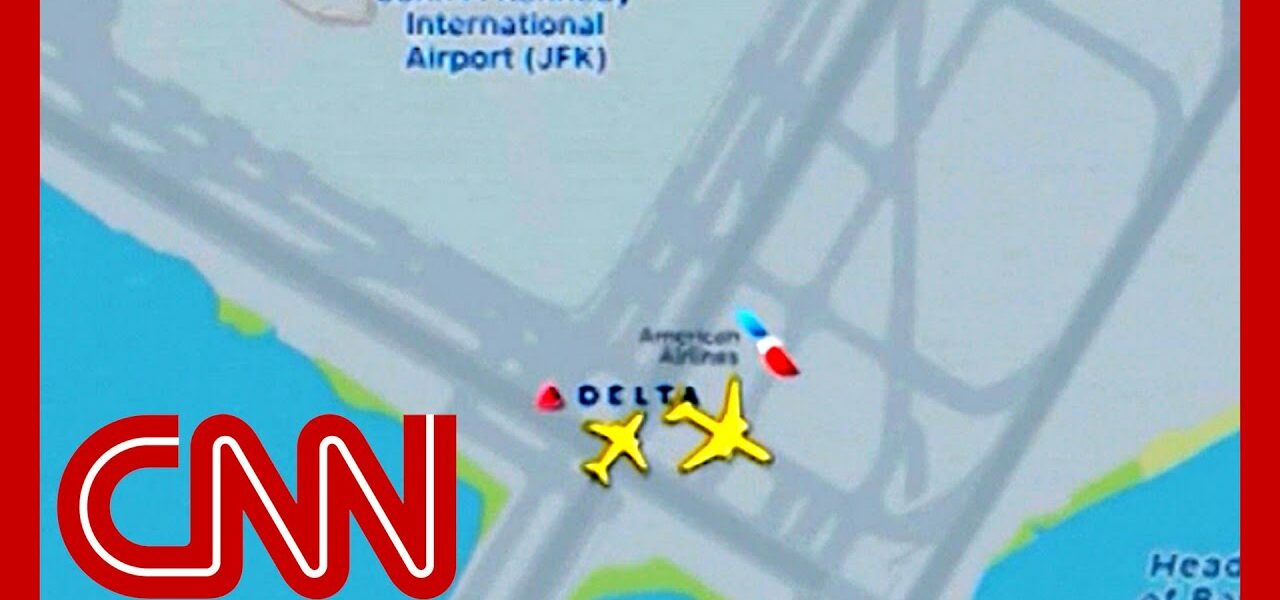The Federal Aviation Administration is starting a probe into how a commercial airliner taxied in front of a flight that was taking off from New York's John F. Kennedy International Airport. CNN's Pete Muntean has more. #CNN #News
Radar shows near-miss between two passenger planes







That was a close call 😳
@Jack Riddance So, do you expect him to be watching all your airports at all times? For God’s sake, you tolerated an ignorant idiot who wanted to nuke hurricanes and spent most of his time playing golf for 4 years. You have your priorities screwed.
@Jack Riddance even if that is true, and I don’t really care if it is or isn’t…take just a tiny little second and ask yourself, should he never be allowed to take a vacation as long as airplanes are moving? Should a CEO never be allowed to take a vacation if there happens to be a sale of one of the company’s products in progress? But of course, it isn’t about thinking with you people. It’s all about dumb little things you say that you think sound smart.
@snoski When you communicate with those uneducated children, you shouldn’t write long sentences 🙂
@Senses – Pete’s busy re-programming all of the FAA’s NOTAM software. He’ll reconfigure worldwide ground incursion programs next, give him a minute.
@Jack Riddance who doesn’t take vacations?..maybe u should try it 😀
“That’s not a near-miss; that’s a near-HIT!” -_________
underrated comment right here… rip GC
The American Airlines (AA106) missed the taxiway to runway 4L to be next to takeoff after Delta Airlines (DL1943) and was headed to runway 31L, the wrong runway. The American Airlines pilot and copilot should have known what the active takeoff runway was. With moving map navigation and even with an ordinary compass both pilots would have seen they were heading in the wrong direction. Airline pilots are required to have a pre-takeoff briefing and both have to agree on which runway is in active use from the broadcast digital Automatic Terminal Information Service (ATIS) and monitor the given taxi instructions on their moving map navigation. There is no single person’s mistake, it had to be multiple failures in procedures to have been broken by both pilots for the potential of a major accident. It is the reason for two airline pilots to verify each other’s action in the cockpit.
The planes didn’t see the other plane on the side? Way before getting to that point.
They have full visibility window.
Could’ve been foggy
This comes 11 years after Egypt Air and Lufthansa incident.
what we want to know is, why was that other plane crossing the runway, didn’t they know not to do this, or did they miss read something?
One question should be answered.
Why did the plane cross the taxi way. Just in front of the plane when it was taking off.
Because it shouldn’t have been there. On the taxi way at that time. That should be asked and answered
According to the image, the Delta had just started its takeoff roll and was nowhere near V1, the speed at which they’re committed to take off, as depicted by the talking heads! Still, not a good situation, but let’s keep it real.
You’re animation demonstrates a much closer scenario than a thousand feet!!!
The aircraft icons aren’t to scale…the planes are much smaller, so the animation grossly exaggerates how close they came. I read a comment in another video that the runway is 200ft wide, but the 737 taking off only has a wingspan of 100ft.
@YouTubaholic thank you!! That makes so much more sense!
We should be grateful of all the things safety guidelines have prevented instead of persecuting the very few incidences we will have.
I don’t understand why it’s called a “near miss”. Wouldn’t that indicate that they hit it. Would a near hit be a better way to say it?
Why does the government worry so much about airplane safety (a good thing) and so little about surface street and highway safety? I’m not talking about crumple zones or pedestrian alert in vehicles, but driver training and enforcement. Your life is very important in a jet, not so much in your SUV.
Could it be that the software ATCs use is becoming more and more complicated and less user friendly? Certainly the rest of the cyberspace suffers from that, I’d be surprised if aviation would be spared.
Since the Tenerife disaster, which, like usual, was a combination of factors, aviation phraseology has been adapted to avoid possible confusion. In Tenerife’s case, the tower asking one aircraft, back-tracking the active runway, « report runway clear » was confused by the other aircraft for a « clear for take off » for itself. The phraseology since then, is now « report runway vacated ». Nevertheless, runway incursions has caused disaster since then and will again for sure.
I don’t know why they still insist on using the word CLEAR in the MOST IMPORTANT permission in aviation: Clear to land, Clear for take off. The word Clear has so many characteristics that are not good. 1) Commonly used word to describe too many things that can sometime mean the opposite: “Clear to land”, “Runway Clear”, “Snow cleared”, Windows cleared, Clearance, etc. I’m sure an English expert can find a better word that will me NON-ambiguous to replace CLEAR and FAA implement the change.
Too much air travel problems in the last two months becoming scary to travel on flights!!
Agree
That air traffic controller deserves a medal 🏅
Ok, she says that “60% of incursions happen at towered airports; you would think that they would happen at non-towered airports.” Well, I need more information to know if I would think that. If 99% of airports are towered*, then I would say the towered airports are doing a MUCH better job of preventing incursions than non-towered airports.
*I don’t know what the actual % is.
EDIT: It turns out that there are vastly more non-towered airports than towered in the US. (20,000 vs. 500). So yes, it is interesting that these incursions are happening with so much greater frequency at towered airports. But even then, what % of air traffic flows through towered airports vs. non-towered??? *My main point: context is extremely important!*
It was a near hit. “Near miss” is illogical, yet it’s the commonly used term.
The plane I was travelling on last week was rear ended but the other plane did not stop and left.
I bet this frequently happens at airports with a perpendicular runway layout.